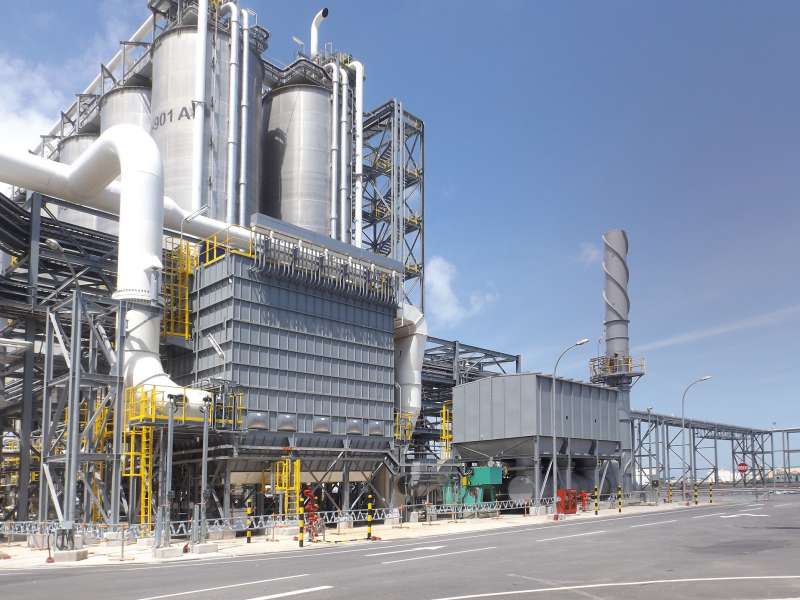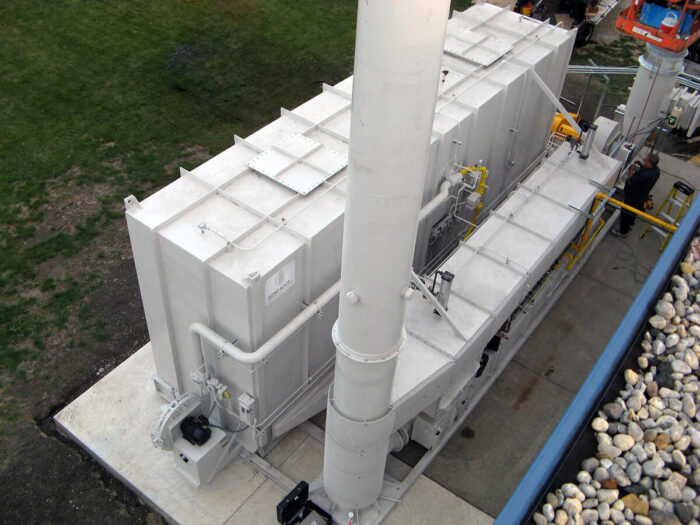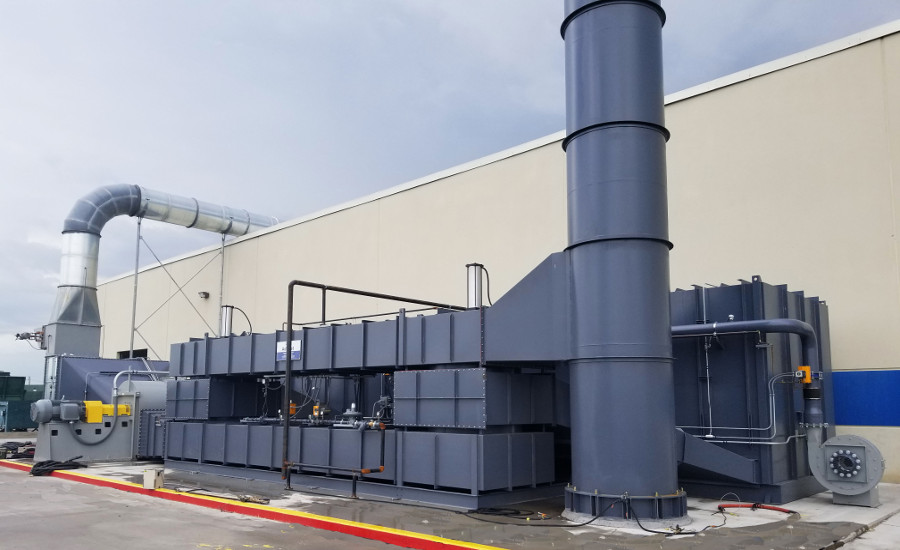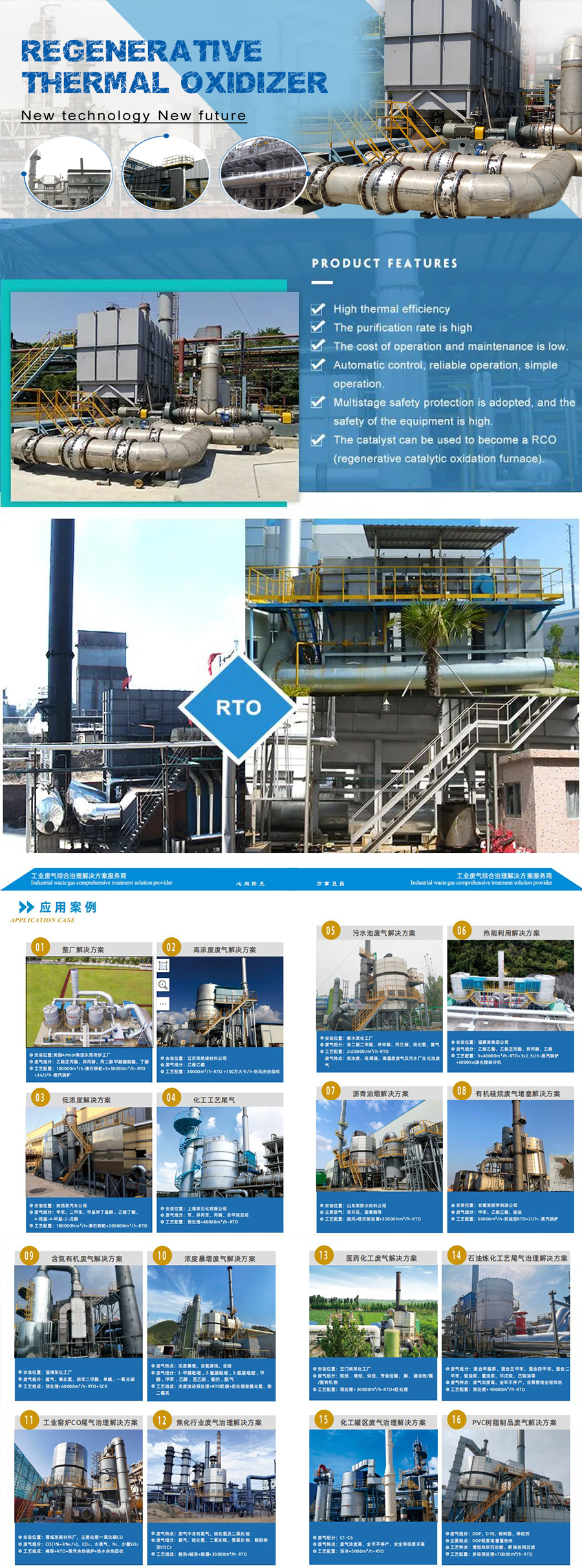Basic Info.
Type
Environmental Monitoring Instrument
Main Function
Waste Gases Removal
Application
Chemical Industry
Brand
Raidsant
Clean Efficeincy
99.8%
Condition
New
Trademark
Raidsant
Transport Package
Film Wrapped
Origin
ZheJiang China
Product Description
HangZhou Raidsant Machinery Co.;,; Ltd.; is majored in developing and manufacturing innovativepowder cooling pelletizing machinery and related industrial waste gas treatment machine.; With nearly 20 years’ production history,; we have a good market in more than 20 provinces in China,; and some of our products were exported to Saudi Arabia,;Singapore,;Mexico,; Brazil,;Spain,; America,; Russia and Korea,; etc.;
Specifications:;
* More compact than the existing facilities
* Low-operation costs
* Long lifespan of facilities
* No changes in pressure
Purpose:;
Energy-saving system that burns volatile organic compound (VOC); and waste gas by using heat,; and it collects over 99.;8% of waste heat of exhaust gas by using ceramic regenerative materials (catalyst); with large surface area and low-pressure loss.;
Applications:;
1.; Painting drying process
2.; metal printing process
3.; fiber drying process
4.; adhesive tape process
5.; waste treatment process
6.; semiconductor manufacturing process
7.; smoke,; confectionary and baking process
8.; petrochemical process,;
9.; medicine and food manufacturing process,;
10.; other VOC generating process
Merits:;
* More compact than the existing facilities
* No changes in pressure
* High-heat recovery rate (over 95%);
* Perfect VOC treatment (over 99.;8%);
* Long lifespan of facilities
* Low-operation costs
* Able to be manufactured in circle or quadrangle
General Descriptions and Features:;
1.; Operating principle
Operation method that continuously changing discharges by rotating the Rotary Valve
2.; Process Pressure Change
No pressure change because wind direction changes in order by the Rotary Valve rotation
3.; Investment Costs
Around 70% of Bed Type
4.; Installation Space
It is single vessel so it is compact and requires less installation space.;
5.; Maintenance
It is easy to maintain it because Rotary Valve is the only 1 moving part.;
Rotary Valve’s sealing part is rarely worn out because it rotates at low speed.;
6.; Stability
No risks in the process because it is always opened even when the Rotary Valve has troubles.;
7.; Treatment Efficiency
Treatment efficiency maintains because sealing part is rarely worn out even if it is operated for a long time.;
Address: No.3,Zhenxin Middle Road, Economic Development Zone,HangZhou,ZheJiang
Business Type: Manufacturer/Factory, Trading Company
Business Range: Chemicals, Electrical & Electronics, Manufacturing & Processing Machinery, Security & Protection
Management System Certification: ISO 9001
Main Products: Pelletizer, Flaker, Pastillator, Granulator, Chemical Pelletizer, Vocs
Company Introduction: HangZhou Raidsant Machinery Co., Ltd. ., previously called HangZhou Xinte Plastic Machinery Factory is majored in producing innovative plastic recycling machinery. With nearly 20 years′ experience, we have a good market in 20 provinces in China, and some of our products were exported to Indonesia, Russia and Vietnam, etc. Our main products include DZ Type Pastillator, waste tire recycling line, Big Calibre Plastic Pipe shredders recycling line, continuous annealing tin-coation machine, QX type PET, PE & hull washing line, SDP double rails plastic recycling crusher, SJ hot cutting granule making unit, PVC tube (cinquefoil) product line, PVC Odd-shaped material product line for door and window, granule product line in water and Shredder for plastics and recycling. We acquired 5 technical patents.
Our corpotation lays emphsis on thchnical reconstruction, imports advanced technology from home and abroad, and develops new products constantly. Our tenet is challenging for hight quality, offering the best products. We are making efforts to realize our slogan. Satisfying our customers is our everlasting pursuit.
We are looking for the oversea customers or agents. If you are interested in our proposal, please let us know which of our products is the most likely to appeal to you or your customers. We should be very grateful if you give us some ideas of the marketprospects for our products. We hope to hear favorable information from you soon! It is our goal that we wish we could buid a good relationship with you now or in the near future. Please do not hesitate to contact us if you have any question or request.
We also sincerely welcome you to our company to discuss business and negotiate with us. For further expanding our market and customers, our company welcomes customer from domestic and aboard in an new-brand gesture on the basis of full-new mangement conception—quality, honour, service. We are looking for ISO 90001 mangement quality system to meet with our customers requirement!

Are there any incentives or grants available for installing regenerative thermal oxidizers?
Yes, there are various incentives and grants available that can help offset the cost of installing regenerative thermal oxidizers (RTOs) and other emission control technologies. These incentives are typically offered by government agencies at the local, regional, and national levels to promote environmental sustainability, air quality improvement, and compliance with emissions regulations. However, the availability and specific details of these incentives may vary depending on the location and the specific program.
Here are some examples of incentives and grants that may be available:
- Energy Efficiency Grants: Many government agencies and utility companies offer grants and financial incentives to encourage energy efficiency measures, including the installation of energy-efficient equipment like RTOs. These grants can help offset a portion of the installation costs and may be based on factors such as energy savings, reduction in greenhouse gas emissions, or specific environmental objectives.
- Environmental Grant Programs: Some governmental organizations or environmental foundations provide grants specifically targeted at reducing emissions and improving air quality. These grants may be available for industries or businesses that invest in emission control technologies, such as RTOs, to help them comply with regulations and improve their environmental performance.
- Tax Incentives and Credits: Certain jurisdictions offer tax incentives or credits to businesses or industries that invest in environmentally friendly technologies. These incentives can significantly reduce the overall cost of installing an RTO. Examples include tax credits for energy-efficient equipment, accelerated depreciation allowances, or exemptions from sales tax on eligible equipment purchases.
- Industry-Specific Programs: Some industries or sectors may have specific grant programs or incentives tailored to their unique environmental challenges. These programs may provide financial assistance for emission control projects, including the installation of RTOs, within those industries.
- Research and Development Funding: Government agencies or research organizations often provide funding opportunities for the development and implementation of innovative emission control technologies. Businesses or research institutions involved in developing advanced RTO designs or improving RTO efficiency may be eligible for research grants or funding support.
To explore the availability of incentives and grants for installing RTOs, it is recommended to contact local environmental agencies, energy efficiency programs, or business development organizations. These entities can provide information on specific incentive programs, eligibility criteria, application procedures, and any deadlines or limitations associated with the grants.
It’s important to note that incentive programs may change over time, and their availability may depend on factors such as funding allocations and government policies. Therefore, it is advisable to stay updated with the latest information and consult with relevant authorities to determine the current incentives available for installing RTOs.

Are regenerative thermal oxidizers suitable for controlling emissions from printing presses?
Yes, regenerative thermal oxidizers (RTOs) can be suitable for controlling emissions from printing presses. Printing presses can emit volatile organic compounds (VOCs) and other air pollutants during the printing process, which need to be properly controlled to comply with environmental regulations and ensure air quality. Here are some key points regarding the suitability of RTOs for controlling emissions from printing presses:
- Emission Control: RTOs are designed to achieve high destruction efficiencies for VOCs and hazardous air pollutants (HAPs). These pollutants are oxidized within the RTO at high temperatures, typically above 95% efficiency, converting them into carbon dioxide (CO2) and water vapor. RTOs effectively control and reduce emissions from printing presses.
- Compatibility: RTOs can be integrated into the exhaust system of printing presses, capturing and treating the emissions before they are released into the atmosphere. The RTO is typically connected to the exhaust stack of the printing press, allowing the VOC-laden air to pass through the oxidizer for treatment.
- High Flow Rates: Printing presses can generate significant exhaust volumes due to the printing process. RTOs are designed to handle high flow rates and can accommodate the varying exhaust volumes of printing presses. This ensures effective treatment of emissions even during peak production periods.
- Thermal Capacity: RTOs have the thermal capacity to handle the temperature variations in printing press emissions. The printing process can result in varying exhaust temperatures, and RTOs are designed to operate effectively within a wide range of temperature conditions.
- Energy Efficiency: RTOs incorporate heat exchange systems that allow for the recovery and reuse of thermal energy. The heat exchangers within the RTO capture the heat from the outgoing exhaust gases and transfer it to the incoming process air or gas stream. This heat recovery process improves the overall energy efficiency of the system and reduces the need for additional fuel consumption.
- Compliance with Regulations: Printing press emissions are subject to regulatory requirements for air quality and emissions control. RTOs are capable of achieving the necessary destruction efficiencies and can help printing press operators comply with environmental regulations. The use of RTOs demonstrates a commitment to sustainable practices and responsible management of air emissions.
It is important to note that the specific design and configuration of the RTO, as well as the characteristics of the printing press emissions, should be considered when implementing an RTO for a printing press application. Consulting with experienced engineers or RTO manufacturers can provide valuable insights into the proper sizing, integration, and performance requirements for controlling emissions from printing presses.
In summary, RTOs are a suitable technology for controlling emissions from printing presses, providing high destruction efficiencies, compatibility with printing press exhaust systems, handling high flow rates and temperature variations, energy efficiency through heat recovery, and compliance with environmental regulations.

Can regenerative thermal oxidizers reduce odor emissions?
Regenerative thermal oxidizers (RTOs) are effective in reducing odor emissions from industrial processes. While their primary purpose is to control and destroy volatile organic compounds (VOCs) and hazardous air pollutants (HAPs), they can also effectively mitigate odorous compounds.
Here’s how RTOs contribute to odor reduction:
- Oxidation of Odorous Compounds: RTOs operate at high temperatures, typically ranging from 1,400 to 1,800 degrees Fahrenheit (760 to 980 degrees Celsius). These elevated temperatures facilitate the complete oxidation of odorous compounds, breaking them down into harmless byproducts, such as carbon dioxide and water vapor. The thermal oxidation process ensures the destruction of odor-causing molecules.
- High Destruction Efficiency: RTOs are designed to achieve high destruction efficiencies, often exceeding 99%. This means that the vast majority of odorous compounds are effectively eliminated during the combustion process, resulting in a significant reduction in odor emissions.
- Retention Time: RTOs provide a sufficiently long retention time for the exhaust gases within the combustion chamber. This allows for thorough mixing and residence time necessary for the complete oxidation of odorous compounds. The extended contact time ensures that the odorous molecules have sufficient exposure to the high temperatures, resulting in their destruction.
- Control of VOCs: Many odorous compounds are also VOCs. By effectively controlling and destroying VOC emissions, RTOs indirectly reduce odor emissions as well. The comprehensive destruction of VOCs prevents their release into the atmosphere, thereby minimizing the associated odors.
- Monitoring and Optimization: Proper monitoring and optimization of RTO operation can further enhance odor reduction. By continuously monitoring the process parameters, such as temperature, airflow, and pollutant concentrations, adjustments can be made to optimize the performance of the RTO and ensure effective odor control.
It’s important to note that while RTOs are effective in reducing odor emissions, the specific odor compounds and their concentrations in the exhaust stream can influence the overall odor control efficiency. Additionally, proper design, operation, and maintenance of the RTO are crucial for achieving optimal odor reduction.

editor by Dream 2024-11-26
